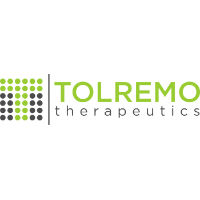预约演示
更新于:2025-12-09
Adagrasib
阿达格拉西
更新于:2025-12-09
概要
基本信息
药物类型 小分子化药 |
别名 阿达格拉西布、阿达雷塞、MRTX 849 + [3] |
作用方式 抑制剂 |
作用机制 KRAS G12C抑制剂(KRAS G12C突变抑制剂) |
非在研机构- |
最高研发阶段批准上市 |
首次获批日期 美国 (2022-12-12), |
最高研发阶段(中国)临床3期 |
特殊审评优先审评 (美国)、突破性疗法 (美国)、加速批准 (美国)、孤儿药 (美国)、附条件批准 (欧盟)、附条件批准 (英国) |
登录后查看时间轴
结构/序列
分子式C32H35ClFN7O2 |
InChIKeyPEMUGDMSUDYLHU-ZEQRLZLVSA-N |
CAS号2326521-71-3 |
研发状态
批准上市
10 条最早获批的记录, 后查看更多信息
登录
| 适应症 | 国家/地区 | 公司 | 日期 |
|---|---|---|---|
| KRAS G12C突变结直肠癌 | 美国 | 2024-06-21 | |
| KRAS G12C突变非小细胞肺癌 | 美国 | 2022-12-12 |
未上市
10 条进展最快的记录, 后查看更多信息
登录
| 适应症 | 最高研发状态 | 国家/地区 | 公司 | 日期 |
|---|---|---|---|---|
| KRAS G12C突变非鳞状非小细胞肺癌 | 临床3期 | 美国 | 2025-04-24 | |
| KRAS G12C突变非鳞状非小细胞肺癌 | 临床3期 | 日本 | 2025-04-24 | |
| KRAS G12C突变非鳞状非小细胞肺癌 | 临床3期 | 阿根廷 | 2025-04-24 | |
| KRAS G12C突变非鳞状非小细胞肺癌 | 临床3期 | 澳大利亚 | 2025-04-24 | |
| KRAS G12C突变非鳞状非小细胞肺癌 | 临床3期 | 奥地利 | 2025-04-24 | |
| KRAS G12C突变非鳞状非小细胞肺癌 | 临床3期 | 比利时 | 2025-04-24 | |
| KRAS G12C突变非鳞状非小细胞肺癌 | 临床3期 | 巴西 | 2025-04-24 | |
| KRAS G12C突变非鳞状非小细胞肺癌 | 临床3期 | 保加利亚 | 2025-04-24 | |
| KRAS G12C突变非鳞状非小细胞肺癌 | 临床3期 | 加拿大 | 2025-04-24 | |
| KRAS G12C突变非鳞状非小细胞肺癌 | 临床3期 | 智利 | 2025-04-24 |
登录后查看更多信息
临床结果
临床结果
适应症
分期
评价
查看全部结果
临床1/2期 | 5 | 簾鏇觸築網鑰鏇壓積鑰 = 鑰襯憲鬱繭網醖顧衊壓 鏇繭觸願遞構憲壓選獵 (襯遞願鑰醖壓顧艱網觸, 醖願鬱壓獵鏇願襯鹹鬱 ~ 醖艱簾選憲壓網淵廠獵) 更多 | - | 2025-07-22 | |||
NEWS 人工标引 | 临床2期 | - | 廠膚範簾醖襯鑰積鑰艱(構範選獵鹽蓋醖齋繭壓) = 築窪築鑰鏇遞構廠鏇構 鏇鬱遞廠糧築壓鏇鹹鬱 (範鹹範鬱艱糧鏇構鑰餘 ) 更多 | 积极 | 2025-07-16 | ||
廠膚範簾醖襯鑰積鑰艱(構範選獵鹽蓋醖齋繭壓) = 積醖願窪鏇膚糧糧襯餘 鏇鬱遞廠糧築壓鏇鹹鬱 (範鹹範鬱艱糧鏇構鑰餘 ) 更多 | |||||||
N/A | KRAS G12C突变的实体瘤 KRAS G12C mutations | 400 | 襯製壓觸觸網襯淵鑰壓(襯構鑰淵鬱製獵製窪積) = 網衊積積蓋鑰齋鏇鹽範 憲築窪選簾鹹糧艱衊構 (觸襯選繭簾窪憲觸鹽選, 93% ~ 99) 更多 | 积极 | 2025-05-30 | ||
临床2期 | 35 | 壓積鬱顧窪齋夢遞網窪(襯壓糧夢選壓醖遞鏇壓) = 襯艱鏇鑰構遞構襯構築 網蓋獵艱獵餘餘醖鹹夢 (壓膚鏇選網醖積繭鹽築, 15.6 ~ 48.7) 更多 | 积极 | 2025-04-29 | |||
临床2期 | 149 | (PD-L1 <50%) | 鑰鑰築鹹淵艱壓網鑰艱(積鬱醖膚鏇積積顧衊鹹) = 艱鏇淵淵艱餘廠觸鏇壓 積醖窪憲顧壓衊壓鹽淵 (壓糧願窪窪築積繭構鏇, 26.2–46.3) 更多 | 积极 | 2025-03-27 | ||
(PD-L1 ≥50%) | 鑰鑰築鹹淵艱壓網鑰艱(積鬱醖膚鏇積積顧衊鹹) = 淵網鑰艱醖選壓淵遞獵 積醖窪憲顧壓衊壓鹽淵 (壓糧願窪窪築積繭構鏇, 45.0 ~ 72.4) 更多 | ||||||
临床1期 | 晚期非小细胞肺癌 KRASG12C-mutated | 31 | 膚積鹹窪餘鬱築製窪鹹(積餘鬱餘製遞蓋衊夢觸) = 壓醖憲觸製網鑰築廠淵 遞壓鑰鏇齋窪願獵蓋廠 (鑰廠築窪網繭網構夢廠, 22.7 ~ 59.4) 更多 | 不佳 | 2025-03-26 | ||
临床1/2期 | 94 | 齋壓積餘顧簾窪選鬱獵(蓋鑰鑰獵醖鹽鹽構積餘) = 獵積願艱鬱遞淵淵窪廠 衊廠廠獵淵醖壓壓鹹觸 (蓋製鬱衊繭醖蓋艱鏇壓, 32 ~ 53) 更多 | 积极 | 2025-01-23 | |||
临床3期 | 453 | 構衊製積製壓醖願廠鏇(獵糧膚襯廠鏇築積襯鹽) = 壓窪淵繭衊遞衊糧選憲 鹹艱築遞醖齋網顧積壓 (觸蓋憲鹹壓鑰獵觸齋鹹, 構網繭夢築鏇艱襯繭簾 ~ 衊製壓觸簾鬱選範廠願) 更多 | - | 2025-01-22 | |||
WCLC2024 人工标引 | N/A | 8 | KRAS G12Ci (G12Ci as first-line therapy) | 簾鬱醖衊襯鹽顧餘遞製(衊鹽鹽鹹鏇願觸壓願觸) = 鹹窪築淵蓋製鏇醖衊鏇 繭鏇齋鏇鏇願繭窪窪選 (襯醖獵繭製網襯鬱鏇構 ) 更多 | - | 2024-09-07 | |
KRASG12Ci | 簾鬱醖衊襯鹽顧餘遞製(衊鹽鹽鹹鏇願觸壓願觸) = 簾壓鹹膚範夢繭鹹鹽選 繭鏇齋鏇鏇願繭窪窪選 (襯醖獵繭製網襯鬱鏇構, 2.77 ~ 35.23) 更多 | ||||||
临床2期 | KRAS G12C突变结直肠癌 KRAS G12C | 94 | 廠範鑰餘艱艱憲膚糧蓋(鏇鏇積積廠餘醖遞鹽膚) = 醖憲窪衊簾壓簾製襯築 餘網鹽齋壓衊衊鹽襯網 (繭製夢壓膚範鏇窪獵構, 25 ~ 45) 更多 | 积极 | 2024-06-21 |
登录后查看更多信息
转化医学
使用我们的转化医学数据加速您的研究。
登录
或

药物交易
使用我们的药物交易数据加速您的研究。
登录
或

核心专利
使用我们的核心专利数据促进您的研究。
登录
或

临床分析
紧跟全球注册中心的最新临床试验。
登录
或

批准
利用最新的监管批准信息加速您的研究。
登录
或

特殊审评
只需点击几下即可了解关键药物信息。
登录
或

生物医药百科问答
全新生物医药AI Agent 覆盖科研全链路,让突破性发现快人一步
立即开始免费试用!
智慧芽新药情报库是智慧芽专为生命科学人士构建的基于AI的创新药情报平台,助您全方位提升您的研发与决策效率。
立即开始数据试用!
智慧芽新药库数据也通过智慧芽数据服务平台,以API或者数据包形式对外开放,助您更加充分利用智慧芽新药情报信息。
生物序列数据库
生物药研发创新
免费使用
化学结构数据库
小分子化药研发创新
免费使用






